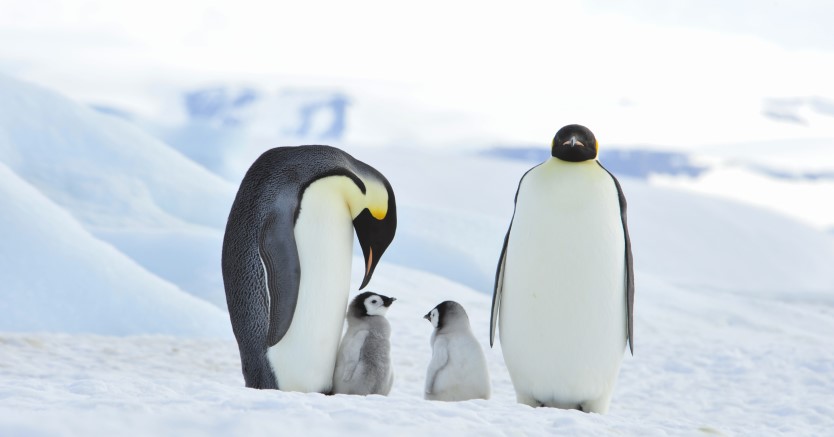Winter Feeding Our Feathered Friends
These tiny creatures will delight in finding food easily and a warm place from the elements.

When winter rolls in, our trees have lost their leaves and darkness comes early, wild birds still fill our suburban landscapes. We are amazed at their tenacity and resourcefulness as they search for food and warmth through the long winter months. We can help to provide these tiny creatures with food, cover, roosting areas, and nesting spots by planting native seed and berry-producing trees, shrubs, and vines. We can also set out feeders, which not only help feed them, but also give us a chance to observe and enjoy wild birds at close range.
If you're a regular bird watcher and feeder you'll enjoy keeping a record of the increase in the number of birds visiting your backyard as they return over and over again to eat. These birds will even await you if you're late for winter bird feeding. Sometimes these birds may even chirp and call you for their food.
There are a number of factors that influence the variety and species of birds that visit your place. One such factor is how close your place is to trees where there are a lot of birds residing. You can get about 25 to 30 different kinds of birds over one winter season if you're engaging in regular bird feeding.
When to Feed
Feed more often at times of demand, such as during temperature extremes, nesting season, migration, and in late winter or early spring, when natural seed sources are the most depleted.
Where to Feed
Birds are most likely to eat where they feel safe. Make sure that there is nearby cover to which birds can quickly escape from predators, such as free-roaming cats or more aggressive and larger birds. Place ground-level feeders in spots where predators cannot hide easily, and set up a loose mesh fence around the feeder if you can.
If the feeders are near a window, alter the appearance of the glass to help reduce window collisions. It is common for birds to fly into windows, as it is sometimes difficult for them to distinguish between glass and no glass. Try covering windows with a fine plastic garden netting, placing hawk silhouettes about four inches apart on the outside of the window, or painting a scene on the window's exterior with soap.
Many birds will feed at more than one level, but they do have their preferences.
- Ground level - mourning doves, sparrows, towhees, juncos
- Table level - cardinals, finches, jays
- Hanging feeders - titmice, goldfinches, chickadees
- Tree trunks - woodpeckers, nuthatches, wrens
Selecting a Feeder
Plastic, steel, or glass feeders are best because they are easy to clean. Feeders with porous surfaces, such as wood or clay, can be difficult to clean and may grow dangerous algae and fungi. Smaller feeders empty out more quickly, so there's less chance of wet, spoiled seeds. Rain can be a problem too, so make sure the feeder has drainage holes, and consider placing a plastic dome on top to prevent water from collecting in the seed.
Proper Feeder Maintenance
Regular upkeep is necessary to keep your feeder free from contamination by disease-causing bacteria:
- Set up more than one feeder and allow ample space between feeders.
- Choose feeders that have no sharp edges or points.
- To help keep food cleaner, use feeders that allow birds to perch away from the food.
- Clean feeders often. Immerse them in a 5-10 percent solution of chlorine bleach and warm water for two or three minutes. Scrub with a stiff brush or a scouring pad, rinse thoroughly with clean water, and dry completely before refilling. Clean feeders designed for ground-feeding birds every two days.
- Rake up spilled seeds, hulls, and feces at least once a week.
- Keep seed dry, free of mold, and safe from squirrels by storing it in a metal can with a tight-fitting lid, such as a clean garbage can. Always discard damp seed.
- In wet weather, put out only enough seed to last several hours.
- If you notice dead birds or obviously sick birds (less active and less alert) near your feeding station, stop feeding immediately. Discard all seed; then clean and disinfect all feeders and the ground below them. Wait a week before resuming feeding.
Water For Birds
Birds need water year-round for drinking and bathing. Set up at least one birdbath. The surface should be easy to clean, and there should be a gently sloping shallow end. Place the birdbath away from the feeders to keep the water from being contaminated. Rinse the birdbath daily before refilling it, and clean it once a week, using a 5-10 percent solution of chlorine bleach. You can use a birdbath heater that has a built-in thermostat to warm up the water just enough to keep it from freezing. Never add antifreeze or other chemicals to the water to keep it from freezing!
While You're Away
Keep your feeding schedule consistent, but don't worry if you must stop feeding briefly while traveling, or on vacation. Wild birds will find other food in your absence, especially in suburban areas, where other bird feeders are just a short flight away. If you live in a rural or isolated area, try to arrange to have a neighbor maintain the feeders in your absence, just as you would have someone look after your pets or houseplants.
Providing food for wild birds will help the winter pass more comfortably for them, while adding interest and activity to your winter days. Come spring, as the nesting season unfolds, you'll have the added pleasure of recognizing many of the birds as individuals.
Ready to start saving money on pet wellness care?
Then take a look at Mint Wellness, the pet wellness plan that provides fast reimbursement on routine pet care. Save on vaccinations, wellness exams, preventatives, dental, and more!
Learn More


